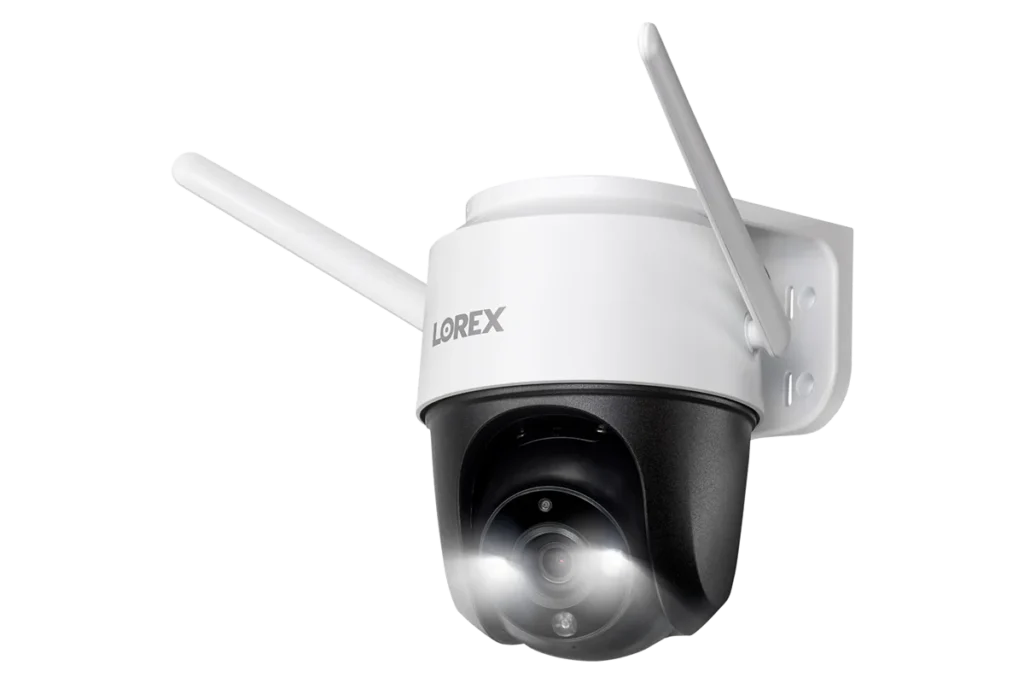
Wireless Cameras
Wireless cameras have transformed modern CCTV by removing the need for long runs of cabling and making surveillance fast to deploy, flexible, and easier to scale. Whether you’re securing a small shop, a rental property, or augmenting a larger system, understanding how wireless cameras work, their strengths and limitations, and how to keep them secure will help you choose the right solution for each scenario.
What “wireless camera” means (and the main types)
A wireless camera generally means a camera that transmits video data without a physical video cable to a recorder or cloud service. Common types include Wi-Fi IP cameras (which use a local wireless network), battery-powered “wire-free” cameras (often paired with a hub and sometimes solar-charged), analogue wireless (radio-frequency transmitters), and cellular (4G/5G) cameras for sites without Wi-Fi. Some systems still require local power (plug or PoE); true wire-free models rely on batteries or solar. Each approach trades off convenience, power requirements, and bandwidth.
How they deliver video and where it’s stored
Wireless cameras either stream to a local NVR/hub on the same site or upload footage to a cloud service. Hub-based systems (a manufacturer’s base station) reduce interference and simplify pairing; direct Wi-Fi cameras connect to your router and can be viewed with an app. Cloud storage makes remote access and off-site retention easy but can carry subscription costs; local NVRs give you control and avoid monthly fees but need physical infrastructure. Many modern vendors support hybrid setups so you can record locally and push critical clips to the cloud.
Why choose wireless? (the upside)
The biggest advantages are speed of installation and placement flexibility: no network cabling means you can position cameras where they see best instead of where cables reach. Wireless systems are ideal for renters, temporary setups, small businesses, and locations where trenching or cable runs are impractical. They scale easily—adding a camera is usually a matter of mounting and pairing—and many cameras now include smart AI features like person/vehicle detection, color night vision, and two-way audio. Vendors are also improving wireless performance with technologies like Wi-Fi 6 to reduce interference and improve stability.
The downsides and technical limits
Wireless does come with trade-offs. Radio interference (from other Wi-Fi devices, microwaves, or neighboring networks), limited bandwidth, and latency can affect video quality and live viewing. Battery-powered models require maintenance—battery swaps or solar panels—and compression for wireless transfer can reduce detail compared with wired PoE cameras. For mission-critical installations (banks, prisons, industrial sites) wired systems still win on reliability and predictable uptime. Evaluate the environment, expected recording quality, and power logistics before choosing a wireless-first design.
Security — what to watch for and best practices
Because wireless cameras connect to networks (and often to cloud services), proper configuration is vital. Always change default passwords, keep firmware up to date, and place cameras on an isolated VLAN or guest Wi-Fi separate from your main devices. Use modern Wi-Fi encryption (WPA2 with AES as a minimum; WPA3 where available) and strong router settings—WPA3 improves protection against offline attacks and helps with device onboarding for IoT cameras. If possible, choose vendors with a track record for security patches and offer local storage options to reduce dependence on third-party cloud services.
Choosing the right wireless camera for CCTV use
Match features to the application: for perimeter or low-light areas prioritize cameras with good low-light sensors or “full-color” night modes; for deterrence, look for models with built-in sirens and warning lights; for remote rural sites consider cellular models. Check IP ratings for outdoor use (IP66/IP67), resolution and frame rate for identification needs, and whether the camera supports local NVR recording or a reliable mobile app for live view. Recent product launches highlight features like Wi-Fi 6, energy-saving AOV modes (captures images at low activity and switches to continuous video during events), and tool-free mounts that simplify installs—useful additions to look for in modern models. (Dahua Technology)
Practical deployment tips
-
Run a Wi-Fi survey or test signal strength where you’ll mount cameras.
-
If using battery cameras, plan for solar or accessible mounts for battery swaps.
-
For multi-camera sites, consider a hub or dedicated wireless bridge to reduce router load.
-
Keep firmware current and logins unique.
-
Balance cloud convenience with local backups—use both when possible for redundancy.
Wireless cameras are no longer “toy” devices; today’s offerings bring high resolution, smart analytics, long battery life, and practical anti-interference features that make them excellent for many CCTV scenarios. Choose the right type for the site, secure your network rigorously, and you’ll get a flexible, powerful surveillance layer that complements wired systems where needed. For real-world product trends—like Wi-Fi 6, AOV power modes, and built-in deterrence lights—check recent vendor announcements and reviews to match features to your use case.
